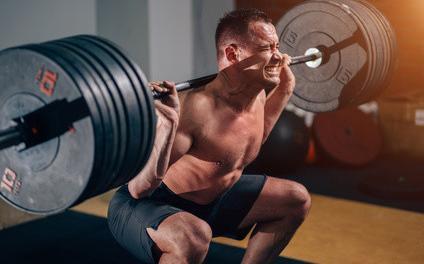Low Impact for the Knee Exercises and Cardio Workouts
There are various knee problems that can limit physical activities. This is not only a problem for the elderly or people who have sustained knee injuries. Every adult is prone to knee problems like osteoarthritis and knee problems can even occur in young adults and teens.
One of the reasons why the knee is at risk is due to the constant strain that it has to bear throughout life. While walking and even running at times cannot be avoided in daily life, it is always best to choose low impact workouts to minimize knee strain when exercising.
Knee Impact Exercises to Do and Avoid
There are numerous exercises, both aerobic (cardio) and strength training, that are suitable or should be avoided when it comes to the knee. Impact refers to sudden high force actions that places strain on the knee structures. However, even low impact exercises can strain the knee.
It largely depends on the type of knee problem, type of exercise and physical conditioning. It is crucial to not undertake exercises if the leg or specifically the knee has not been conditioned to bear the force. Similarly, exercises that were previously manageable may not be suitable after a knee injury or other type of knee condition arises.
Age is also a factor as oseoarthritis of the knee affects every adult to varying degrees and generaly worsens with advancing age. It is therefore important to seek medical advice before commencing with an expercise that may impact on the knee. Always stop any exercise when there knee pain arises or worsens.
Read more on knee arthritis.
Aerobic (Cardio) Exercises
There are several options for aerobic (cardiovascular) exercises that are low impact for the knee joint. These activities should not involve walking and running, which are among the more high impact workouts for the knee. However, it is important to note that the knee is not entirely spared with the recommended low impact exercises. Since these activities require bending at the knee joint, this can still cause knee strain with certain activities.
Exercises to Do
- Swimming: Although it requires movement of the lower leg and therefore some strain of the knee joint, swimming is low impact on the knee. It is also one of the most effective aerobic (cardiovascular) exercises that uses most of the major muscle groups in the body.
- Elliptical Training: Strain on the knee is not entirely nullified with elliptical trainer workouts as the knees have to bear the body weight while upright. However, it minimizes the force on the knee joint while mimicking the walking/running motion.
- Stationary Rowing: As with the other exercises, there is still some degree of strain on the knee joint with certain types of stationary rowing. The leg bends at the knee joint when pushing backwards with each cycle. However, there is minimal impact on the knee joint compared with walking/running.
- Cycling: Cycling is another better option to walking/running as there is minimal impact on the knee joint. However, there can be some degree of knee strain with bending at the joint during each pedal cycle. This may be amplified when cycling while standing, also known as standing-pedalling.
Exercises to Avoid
- Walking: While walking is an unavoidable activity of everyday life, it should be avoided as an exercise workout when there are problems. Every step causes impact on the knees even when walking slowly. However, if necessary then wearing the right footwear and a knee brace can help minimize knee strain to some degree.
- Running: One of the exercises that should be avoided when knee problems are present is running. There is significant impact on the knee with every step as the force generated by striking the ground travels up from the foot to the ankle, knee and hip. Elliptical training is a good alternative.
- Stepping: Conventional stepping is another high impact exercise on the leg and hip joints. There is also strain placed on the knee both with ascending and descending. However, stepper exercise machines can drastically reduce the impact but not entirely without straining the knee to some degree.
- Jumping: Any activity that involves jumping should be avoided as far as possible. Jumping is a high impact activity and apart from skipping, it is usually note a standalone activity. Instead it may be part of certain sports like basketball and these sporting activities should be avoided if there are knee problems.
Strength Training Workouts
Strength training workouts do not typically cause impact on the joints. This means that there is no sudden high force applied to the joint. However, there is nevertheless significant force applied to the joint, albeit slowly, with various strength training workouts. This usually occurs with thigh and lower leg exercises with weights as part of strength training exercise to build the leg muscles.
Exercises to Do
There are numerous strength training exercises for both the upper and lower body that does are low impact for the knees and do not cause significant strain on the knee joint. It is important to consult with a doctor, physical therapist and certified personal trainer to find strength training activities that are suitable. It is important to ensure that the leg muscles and joints are appropriately condition over time, with gradual increases in intensity and duration.
Exercises to Avoid
- Leg Presses: Pushing weights with the legs may not cause significant impact on the knee if done slowly but leg presses does strain the knee when heavy weights are used without appropriate conditioning. There may also be significant bending at the knee joint which can be a strain for people with certain knee problems.
- Jump Squats: Although this is a strength training workout, jump squats are high impact activities for the knees. As with jumping for any aerobic (cardio) activity, these exercise should be avoided even if weights are not being used during the workout.
- Deadlifts: Raising weights from a squatting position can place strain on the knee joint even without significant impact. Higher weights will naturally cause greater strain, especially when not appropriately conditioned.
- Weighted Squats: Also known as the weighted single-leg squat, these exercises can also place strain on the knee despite minimal to no impact. Heavier weights will cause greater strain and conditioning is therefore important. Bending the knee during the squat, especially when lunging, can strain both knees.







